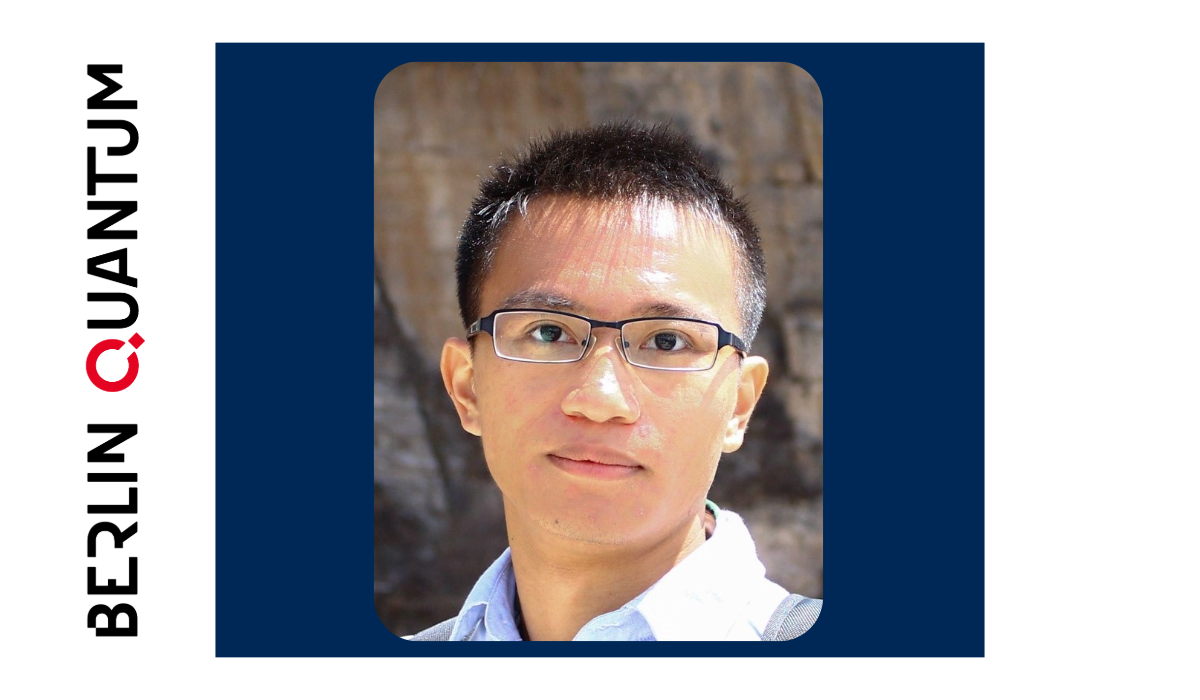In this interview, Dr. Zhuo-Yu Xian, a researcher at Freie Universität Berlin, shares his journey into quantum many-body physics and his current work on Realizing Holographic Codes on Quantum Devices. From tensor networks to non-Markovian dynamics, Dr. Zhuo-Yu explores how theoretical models connect with experimental platforms in Berlin’s vibrant quantum research ecosystem, supported by BERLIN QUANTUM.
What inspired you to pursue a career in quantum physics?
I want to understand nature at its most fundamental level. As an undergraduate, I learned that a system is described by a wave function, not by definite classical variables; from that moment I knew quantum mechanics is the deepest language we have. Although many phenomena admit effective classical models, discovering how thermodynamics, phases of matter—and even gravity—emerge from underlying quantum descriptions still amazes me. That curiosity steers my work on quantum many-body physics and quantum information.
Why did you choose to conduct your research in Berlin?
Berlin’s cultural diversity spills over into its research culture. At Freie Universität, I enjoy open discussion, flexible collaboration, and colleagues who are genuinely excited about science. The city’s blend of efficiency and informality suits my working style and keeps daily research engaging.
What advantages does Berlin offer for quantum physics research compared to other cities or countries?
Being next to the Dahlem Center for Complex Quantum Systems gives me instant access to experts in quantum matter, information, and technology. Berlin’s dense academic cluster—reinforced by BERLIN QUANTUM—keeps me at the cutting edge and makes finding collaborators as easy as a short U-Bahn ride.
Can you tell us about a current project or experiment you are working on?
I am pursuing four related lines on holography in quantum systems:
- Symmetry & entanglement in tensor networks – showing how local symmetry constraints create non-trivial entanglement patterns in the boundary state.
- Holographic circuits from temporal correlations – encoding many-body time correlations as a higher-dimensional circuit whose volume measures preparation complexity.
- Encoding boundary dynamics – extending the above framework to capture full boundary time evolution, not just static correlations.
- Non-Markovianity in chaotic subsystems – using process-tensor mutual information to quantify memory effects in realistic devices and giving them a holographic reading.
How does BERLIN QUANTUM and the Berlin research landscape support your work, and which resources are particularly helpful?
The Berlin community is strongly oriented toward building and applying quantum devices. As a formally trained theorist, I learn a great deal from this hardware-focused perspective—seminars on implementation constraints and benchmarks continually sharpen my models and keep them experimentally relevant.
What role does collaboration with other scientists and institutions in Berlin play in your research?
Collaboration is central. Most of my current projects began as hallway conversations in the FU Physics Department. Regular discussions supply new ideas, clarify puzzles, and often provide the missing link in a calculation.
How does living in Berlin influence your personal and professional development?
Berlin’s vibrant scene encourages me to join more social and hobby groups, broadening my outlook. Professionally, the city’s lively research culture teaches me to present my work clearly, ask sharper questions, and spark stimulating conversations in everyday encounters.
In your opinion, what are the most exciting developments or trends in quantum physics that we can expect in the coming years?
Two stand out: fault-tolerant quantum computing and programmable quantum simulation. Google’s Willow processor has crossed the surface-code threshold, and neutral-atom machines already exceed 1,000 qubits. At the same time, Rydberg- and trapped-ion simulators are tackling lattice-gauge theories beyond classical reach, letting us watch real-time many-body dynamics and test holographic toy models years before universal computers mature.
Do you have a special experience or anecdote from your time in Berlin that you would like to share with us?
A memorable moment was our joint Christmas party with the Jens Eisert and Alexander Jahn research groups. We played a fast-paced scavenger hunt, racing against the clock to find quirky items—everything from odd-numbered objects to handwritten formulas. It was a fun way to mix physics, teamwork, and holiday spirit.
What advice would you give to young scientists who aspire to a career in quantum physics and might consider coming to Berlin?
Come curious and collaborative: Berlin’s universities and institutes—linked by the Berlin Quantum Alliance—invite fresh ideas and let you move freely between deep-theory seminars and hands-on labs. Bring questions and an open mind, and the city’s international research culture will help you find mentors, partners, and the resources to grow.
More information.

